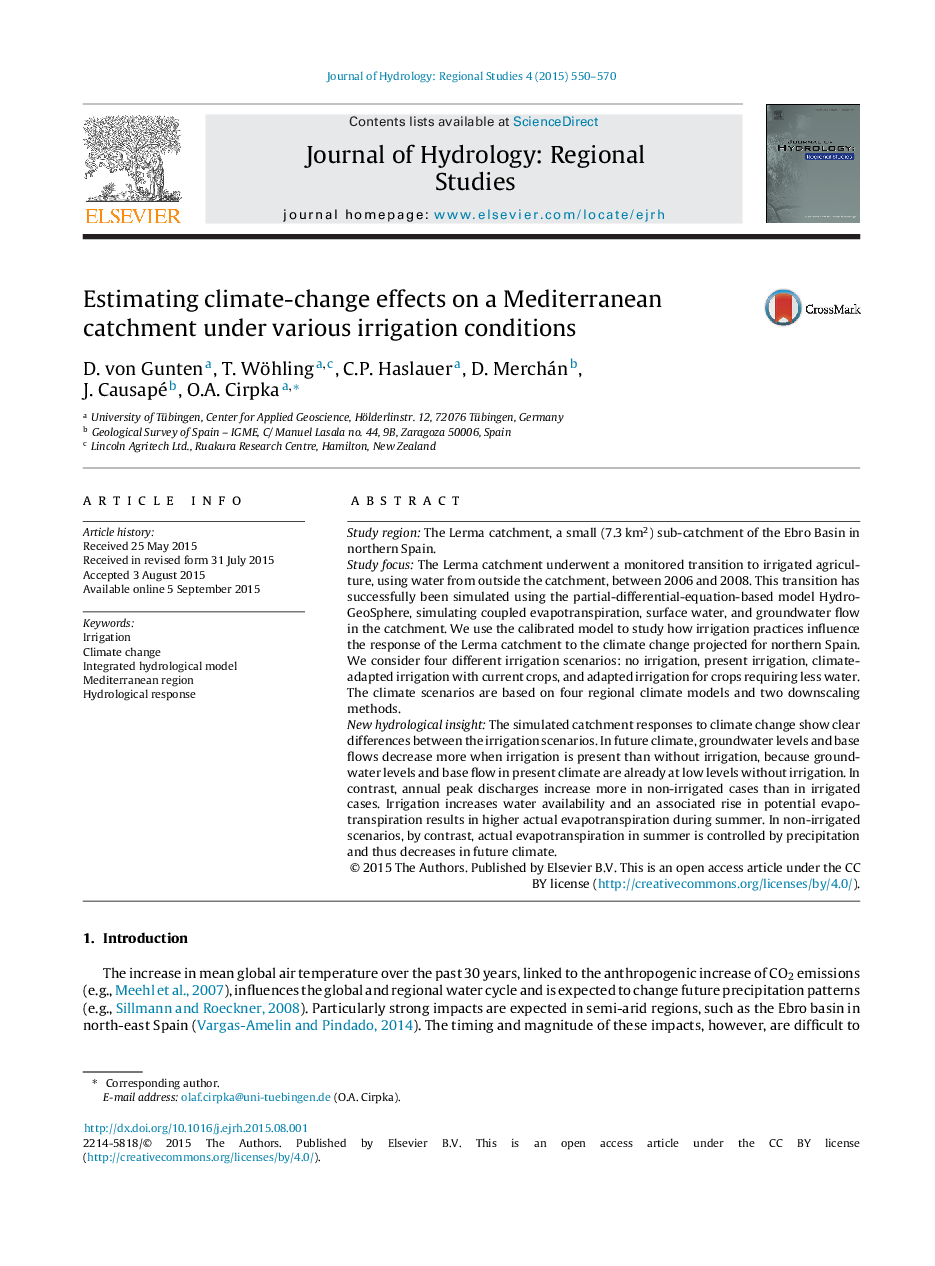| کد مقاله | کد نشریه | سال انتشار | مقاله انگلیسی | نسخه تمام متن |
|---|---|---|---|---|
| 4435124 | 1310546 | 2015 | 21 صفحه PDF | دانلود رایگان |
• The hydrological response of a catchment is modeled under various irrigation regimes.
• We simulate climate change impacts in the study area under four irrigation scenarios.
• The dependency on land-use of climate change impacts on hydrology is investigated.
• Hydraulic heads and base flows react more to climate change if irrigation is present.
• Peak flows are more sensitive to future precipitation variability without irrigation.
Study regionThe Lerma catchment, a small (7.3 km2) sub-catchment of the Ebro Basin in northern Spain.Study focusThe Lerma catchment underwent a monitored transition to irrigated agriculture, using water from outside the catchment, between 2006 and 2008. This transition has successfully been simulated using the partial-differential-equation-based model HydroGeoSphere, simulating coupled evapotranspiration, surface water, and groundwater flow in the catchment. We use the calibrated model to study how irrigation practices influence the response of the Lerma catchment to the climate change projected for northern Spain. We consider four different irrigation scenarios: no irrigation, present irrigation, climate-adapted irrigation with current crops, and adapted irrigation for crops requiring less water. The climate scenarios are based on four regional climate models and two downscaling methods.New hydrological insightThe simulated catchment responses to climate change show clear differences between the irrigation scenarios. In future climate, groundwater levels and base flows decrease more when irrigation is present than without irrigation, because groundwater levels and base flow in present climate are already at low levels without irrigation. In contrast, annual peak discharges increase more in non-irrigated cases than in irrigated cases. Irrigation increases water availability and an associated rise in potential evapotranspiration results in higher actual evapotranspiration during summer. In non-irrigated scenarios, by contrast, actual evapotranspiration in summer is controlled by precipitation and thus decreases in future climate.
Journal: Journal of Hydrology: Regional Studies - Volume 4, Part B, September 2015, Pages 550–570
